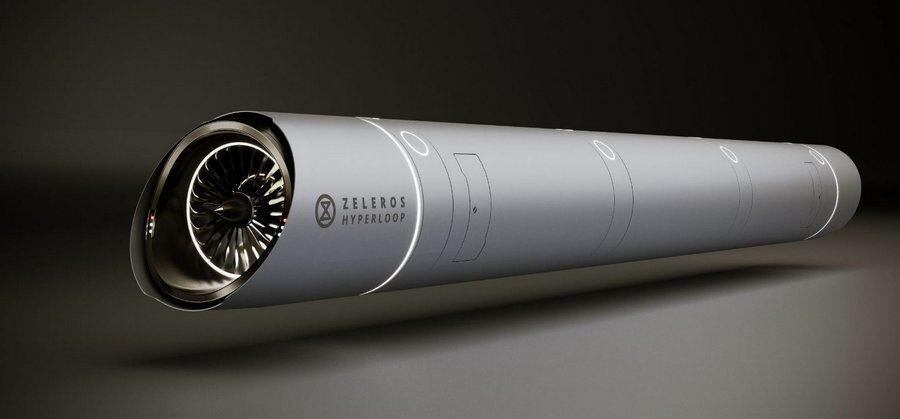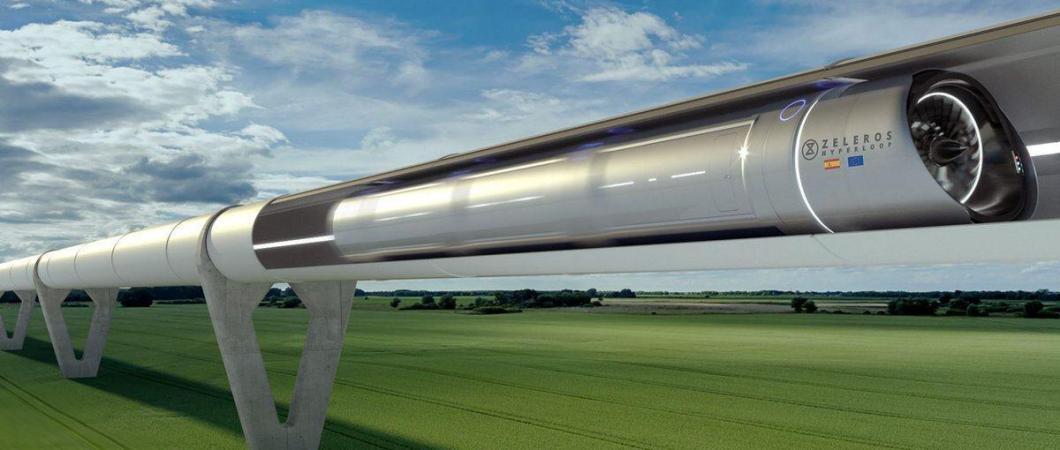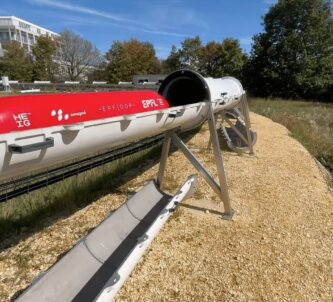Zeleros Hyperloop, based in Valencia, has completed a financing round worth more than €7 million to support the development of its hyperloop design.
The company is working on its own version of Elon Musk’s hyperloop concept – trains travelling at supersonic, even hypersonic, speed in near-vacuum tubes, riding on frictionless magnetic levitation (maglev), powered by linear induction motors and axial compressors.
Zeleros point out that 95% of the investment & running costs of the standard hyperloop designs are spent on the tube infrastructure, not the vehicles. This is because there are electrical substations and power systems needed along the length of the track. In the Zeleros design the linear motor track runs only for a short distance at the ends of the tube and is used only to accelerate the train at the start of its journey and for braking at the end.
After that the electric aerodynamic engine – essentially a turbofan ducted through the roof of the train – takes over. So, in their design, instead of operating in a near vacuum they run in the same air pressure environment as an airliner, maximising the efficiency of their turbofan and reducing the cost of maintaining a near vacuum for the length of the tube (up to 1500 kms).
They ‘sell’ denser atmosphere as a comfort point for passengers, arguing that the vehicles operate at “safer pressures”. While that may be better for the structural engineering of the tube and the vehicle, it’s hard to see how it’s a benefit to passengers.
So what about the maglev? Well that’s handled by modular electromagnetic units onboard, controlled by advanced algorithms. “These enable the vehicle to levitate at speeds up to 1,000km/h with extreme precision and minimum resistance.”

Zeleros’ new funding comes from companies such as Altran, Grupo Red Eléctrica and also strategic investors at national and international level, including among others Goldacre Ventures (United Kingdom), Road Ventures (Switzerland), Plug and Play (USA), and the Spanish Angels Capital and MBHA.
The funds will be used for further development of the design at their European Hyperloop Development Centre in Spain, which will include a 3-km test-track to demonstrate the effectiveness of the technology at high speed.
Why should we be excited? Well Zeleros hopes to be able, eventually, to move passengers and freight between, for example:
- Brussels to Barcelona, Moscow to Berlin, or Budapest to Istanbul in 2 hours
- Copenhagen to Paris, Helsinki to Moscow, Paris to Berlin in 1½ hours
- OR Rome to Nice, London to Edinburgh or Warsaw to Berlin in an hour or less.
Zeleros are not the only hyperloop developers but they do have some interesting proposals.




I shaw be looking forward to having a ride on the All New Hyperloop system. But I would like to give it a Test First.
Yes, I agree. I think it has huge potential. I’d love to use it. At those sorts of speeds, there is potential for fatal disaster, but no more than in civil aviation.